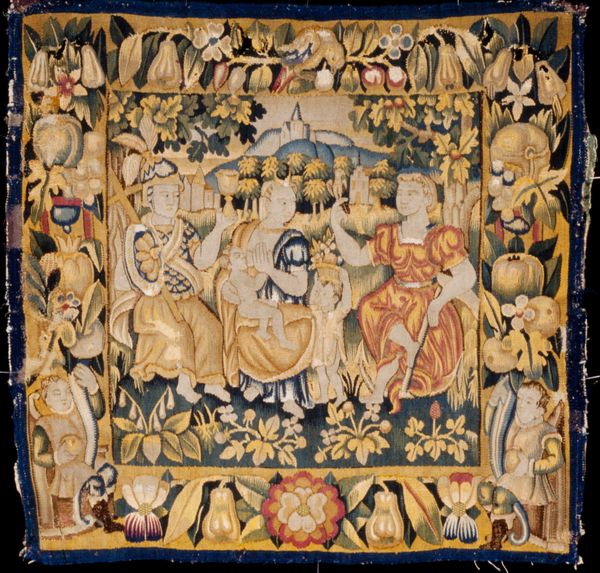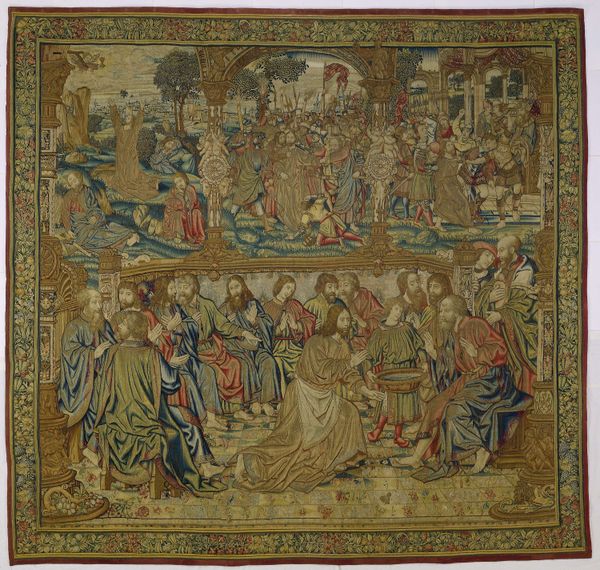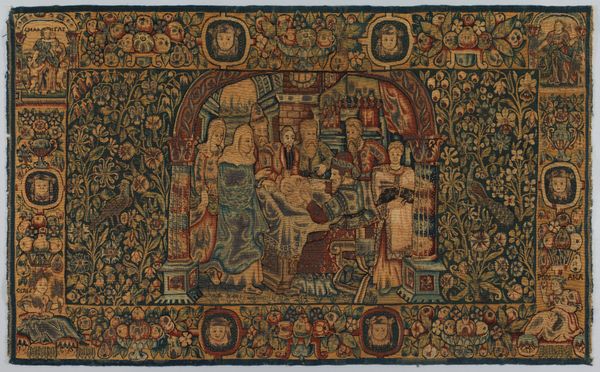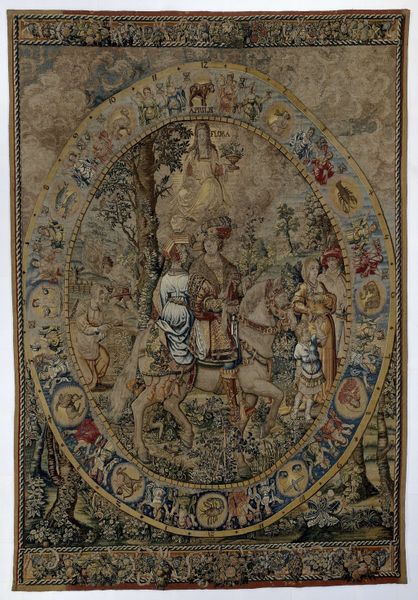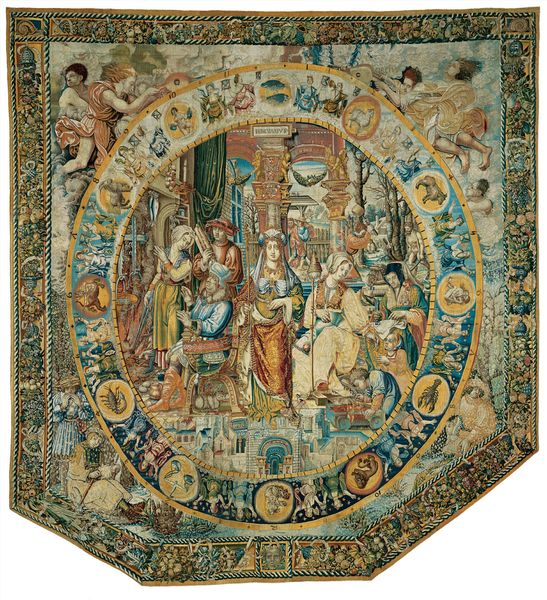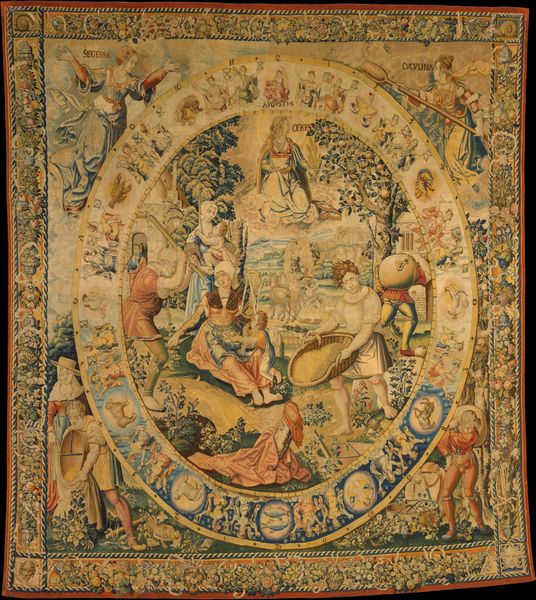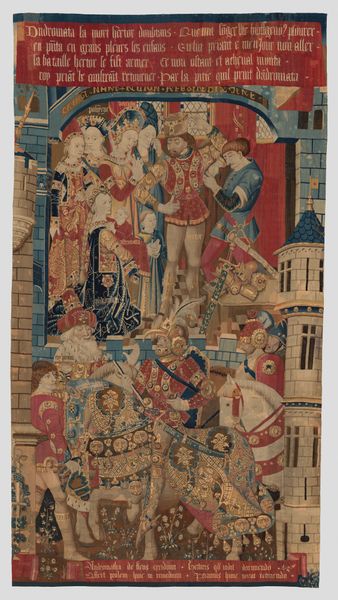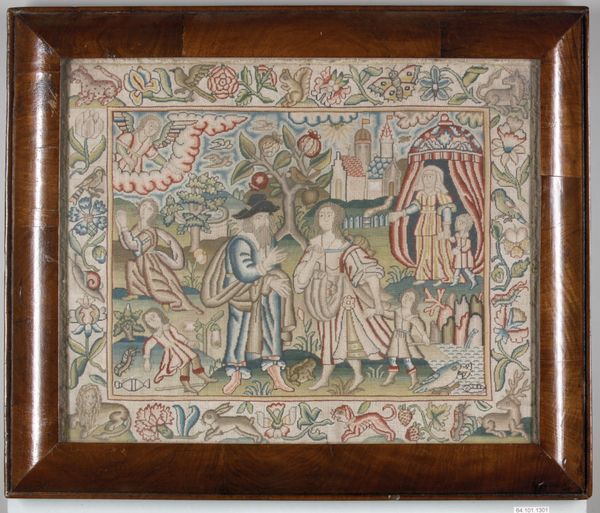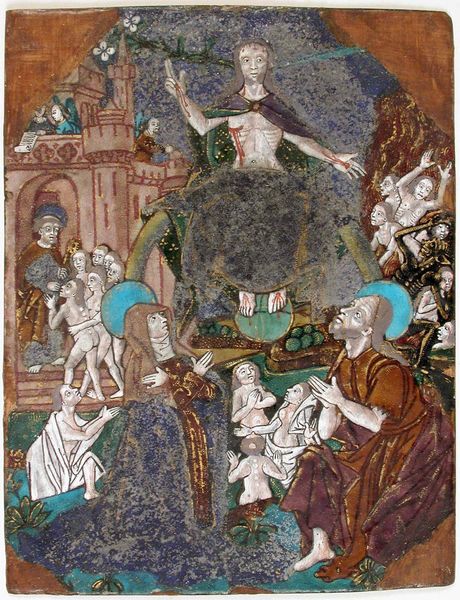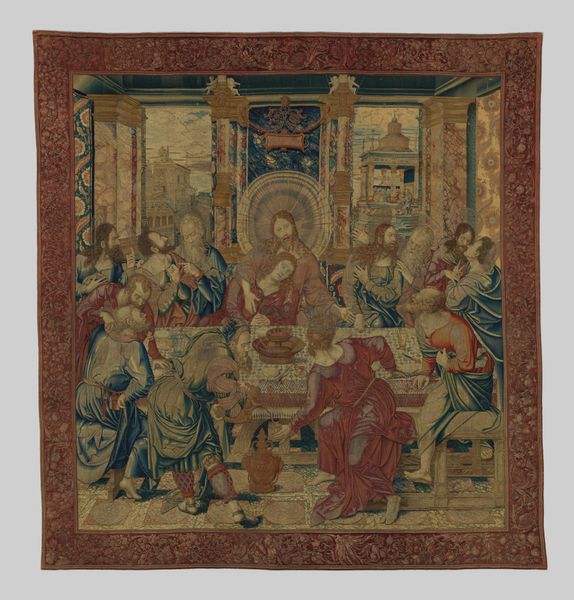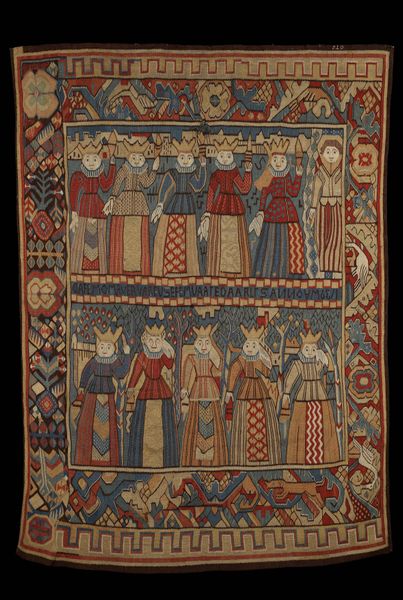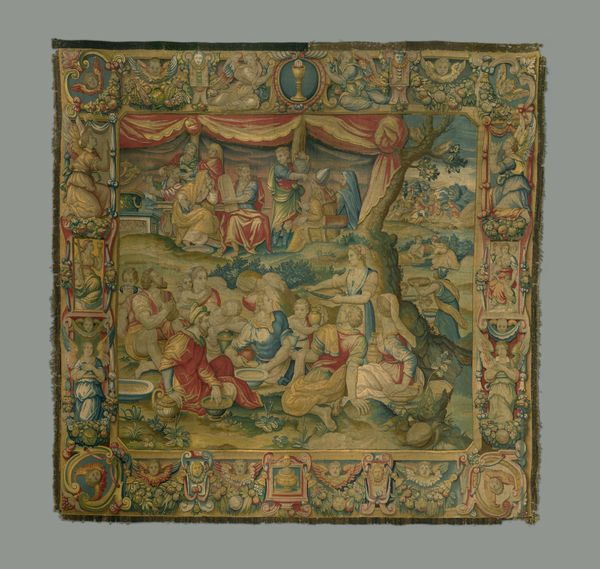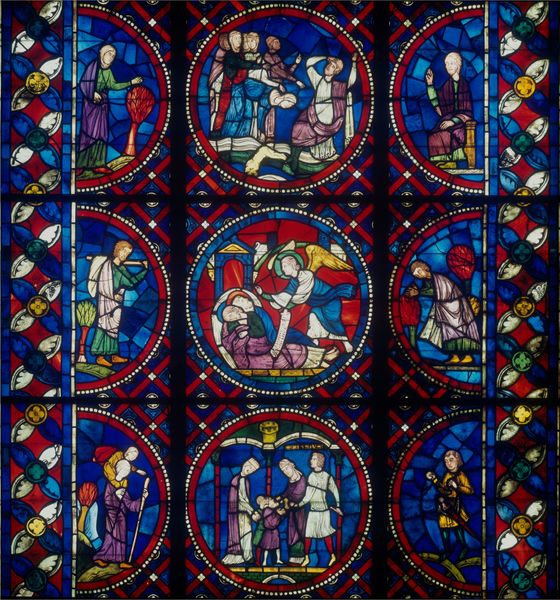
Schild van een koormantel met het dispuut van de heilige Catharina van Alexandrië c. 1525
0:00
0:00
anonymous
Rijksmuseum
#
natural stone pattern
#
toned paper
#
water colours
#
handmade artwork painting
#
tile art
#
coloured pencil
#
watercolour bleed
#
watercolour illustration
#
watercolor
#
watercolur painting
Dimensions: height 53 cm, width 49 cm
Copyright: Rijks Museum: Open Domain
Curator: What a compelling image! This is a shield for a choir mantle depicting The Dispute of Saint Catherine of Alexandria, crafted around 1525 by an anonymous artist. Editor: My first impression is how contained the drama feels, almost theatrical. The colors are muted, the textures so rich… yet it's surprisingly static. Does that resonate with you? Curator: Absolutely. The composition is quite deliberate. The figures are arranged within this elaborate, architectural frame, almost as if they're on a stage, heightening the sense of performance. Observe the meticulous attention to detail in the draping of the robes. Notice the arrangement of light and shadow which serves to direct the viewer's gaze, reinforcing a hierarchy of importance. Editor: It’s interesting how the textile itself informs our understanding. Choir mantles were used during specific ceremonies. This scene of disputation, St. Catherine debating the philosophers, then, would have been a powerful symbol of knowledge and authority for the Church. Curator: Precisely. Furthermore, the choice of materials, perhaps watercolor and coloured pencil on toned paper, provides insight into the artistic practices of the period. The tactile quality, especially evident in the complex surface ornamentation, adds another layer of meaning to our visual engagement. I’d argue that it speaks to a time when art was not just about representation, but also about material presence. Editor: And I wonder who would have seen it. Restricted viewing only from certain powerful elites versus open availability—always an important question, shaping how the art itself functions in society. Curator: Indeed, its original context as part of a ritual garment alters how we read the artwork. Considering that such vestments often communicated status and piety, that shield served both aesthetic and symbolic functions. Editor: Analyzing that dynamic—visuality and functionality—highlights how art serves within networks of power and belief. I appreciate its resonance today. Curator: Yes, examining this shield, whether as a pure configuration of forms or as a symbol embedded in socio-historical narratives, allows a new lens to consider our own relation to the past. Editor: Indeed, something to reflect on. Thanks for these observations.
Comments
No comments
Be the first to comment and join the conversation on the ultimate creative platform.
